Cultivating community
Canterbury has experienced its fair share of trauma over the past 10 years, but like its people, its community gardens are resilient, blooming where once there was rubble.
Community gardens play an important role in rebuilding societies, and there are 40 of them dotted around Canterbury region. They are places where people from different ethnic groups can come together to garden, build social ties, grow food and share the environment. And no matter who the recipients are of the bounty, community gardens are places where people are actively involved in a project for the 'greater good’.
The Canterbury Community Garden Association (CCGA) is a support network for 37 of those gardens and the people who work and volunteer in them.
“We have a lot of community gardens in Christchurch and the number has grown significantly since the earthquakes. Our city was compromised and often we didn’t know where our food was going to come from,” says CCGA’s Rachel Vogan.
“There has been an emotional need to connect with people in very peaceful places. Gardens have an energy that repairs you from the inside and we needed that in Christchurch. After the earthquakes, there were no garden centres open, so people needed to grow food at home, and with lack of space, community gardens became very important places and the for the past 10 years we’ve been working to meet the increasing demand.”
Each garden runs slightly differently. Some are gated, some aren’t. Some, like the Christchurch South Community Gardens are run more like urban farms where they grow a lot of produce in a small space with agricultural techniques. Some have volunteer teams, others have a paid part-time staff member, supported by a local trust or council. Some run on a ‘sweat equity’ – if you help in the garden you learn, you get seedlings or food.
“If you do the mahi, you get the rewards, and those rewards can also be altruistic – community connection, being part of a bigger thing. It’s about cultivating community and giving people a place to go that is welcome, safe and one where they can contribute,” says Rachel.
Many community gardens run on the smell of an oily rag and are under-resourced so have to be creative, coming up with ways to keep operating to buy tools and seeds – some sell plants and preserves at local markets or from their gate.
In Woolston, the Smith Street Community Garden spreads over two-acres on the former Christchurch City Council nursery site. Twenty years ago, Te Whare Roimata Trust established the community garden, gifted the lease from the Council. Over the past 10 years, the Trust has stepped back and let the family of volunteers set up an Incorporated Society to develop the garden into what it is today.
Georgina Stanley is employed by the board to manage the gardens. She has a rich academic history - an anthropology degree and a Masters in Agriculture (Maori/Pasifika) - as well as many years’ experience working in her family’s market garden. She became involved in the garden after the first COVID-19 lockdown, concerned about the impact the pandemic would have on food security. “A friend and I got a plot at the garden and grew lots of veges. I was then offered a job. I know how to do a thing or two,” she laughs.
Georgina says Eastern Christchurch has a diverse cultural and socio-economic mix, and that providing a space where people can grow their own food, and learn how to do that, is vital. The garden is divided into three areas: a large market garden, a public space and the remaining third in plot holdings.
“The plot holdings offer space for people grow what they like, including vegetables and flowers. They pay a fee each week, which gives us a small income to keep the other parts of the garden maintained and productive,” says Georgina.
At the moment, Georgina and her volunteers grow a full range of vegetables except for potatoes and tomatoes, the latter affected by a bad infestation of psyllid last year. Some of the veges are boxed and sold at wholesale prices through a subscription service, while the remainder is distributed to the community. The Ministry of Social Development buys 30 boxes a week to give to people who move into the community for a short time, and the recipients work at the garden for a few hours each week in return.
“Vegetables are expensive at the moment and as summer comes, we’ll be looking at harvesting zucchini, corn, cucumbers, fennel, onions and lots of salad greens. We grow what people want and everything has to be able to turn around between 30 and 60 days to make the box system work.”
Georgina says each culture gardens in a different way and there is a diversity of gardening styles. The Afghani community garden in a grid pattern, with brick pathways lining each bed. They grow really small baby leeks, which are densely planted. Sometimes they’re called ‘cut leeks’. Some of the Māori gardeners are growing kumara and kamo kamo. The Christchurch City Mission also has plot where they grow vegetables and the ‘night shelter’ people are currently building a chicken coop.
As well as a social benefits, community gardens have environmental paybacks. They reduce food miles, creating a more sustainable food system and improve food security. Research has shown that people who grow their own food increase their fruit and vegetable intake, which improves dietary habits. Gardens can also help improve air, water and soil quality and positively impact the urban micro-climate.
The Lyttleton Community Garden was established (in its current form) in 2004, supported by Project Lyttleton who organise the Lyttleton Farmers Market. The market supports the garden by providing funds to buy seeds, potting mix and other essentials. Often the garden receives donations in kind, such as tools and it also enjoys good support from the Lyttleton Port company, who supplied the timber to make the garden beds.
Sue-Ellen Sandilands is the garden coordinator, a paid position. She and any volunteers get together and decide what to plant in the 10 raised garden beds. It’s a moveable feast, as Sue Ellen explains.
“Because of we don’t have a huge number of people who come through the garden, we have to get things get done when there’s people-power. You work with what’s happening in the community.”
Sue-Ellen grows the “whole gamut” of vegetables, including a lot of silver beet. “Our garden is in a very sunny position, and we’ve had fabulous sweetcorn and we’re about to plant it again. One of the volunteers loves corn, so we grew it. We had many sweetcorn feasts!”
The produce from the garden is given away. Recently Sue-Ellen took a container of silver beet to a local garage sale where people could help themselves. The garden is open all the time so people can walk through and pick what they need. There’s also a local meals-on-wheels style service that the garden regularly contributes to.
Every Wednesday is ‘gardening day’ and there’s a shared lunch for the volunteers, making dishes, often soup, from whatever’s growing in the garden. From week to week, there is a variety of volunteers. “Last week we had three women and their preschoolers helping out for a few hours. Next week it could be a different group. We don’t seem to attract people who need food necessarily, people come who enjoy gardening and sharing knowledge.”
Living on her own, the garden is a place that gives Sue-Ellen an opportunity to connect with others.
“A garden is a perfect place for connecting with people and nature,” she says. “It’s great to catch up, and it’s also a place where you can move away from other people. You can choose to be in a conversation or not. You find yourself watching the plants grow, discussing with someone in depth about how best to eat an artichoke – butter or oil is the question! Next minute you’re chatting about holiday’s you’ve been on. The common denominator is that you’re out in the fresh air and contributing to the life of the garden. I absolutely love it.”
Starting a community garden
As in Canterbury, most regions around the country will have a community garden. If you want to get involved, Google your local garden and get in touch. And if you would like to start your own community garden, Yates suggests these seven steps to help you:
- Speak to your neighbours, including café owners and schools etc. See how much support other members in the community can offer. It is essential that you have the backing of your community as a community garden is a team effort.
- Rein in your team. With the help of your team, set goals and outline rules of engagement. Establish what the garden will be, what you will grow, how it will be used and how the harvest will be shared. Draw up a design of the garden so that everyone can visualise it.
- Set your sights on a site. Next up is locating a site, but before you do, we suggest visiting existing community gardens to speak to their members about what works well, what their frustrations are and what you should consider.
- Take your plans to council. Before going any further, it’s important to ensure the local council is on board. They will be able to advise on land ownership or any future plans for the location you have chosen. Local councils are often very helpful with setting up a community garden.
- Check the conditions. Has the soil been tested to make sure it is conducive to growing? Do you have a water supply? Does the location receive ample sunlight?
- The secret is the soil. If you have a clay-based or sandy soil, it’s probably best to install raised garden beds. If this isn’t an option, it’s important that you nourish your soil with organic matter to give your garden has the best chance at success.
- Rally the troops and get planting! It’s important everyone has a role to play so we suggest creating a roster for feeding, watering, and general maintenance, so that everyone feels like they are a part of something special.

1-Dec-2021
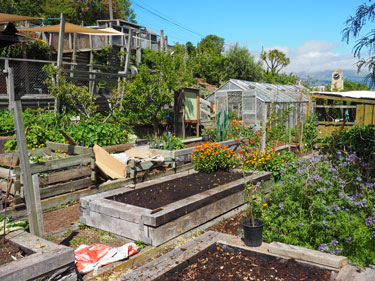
Lyttleton community garden
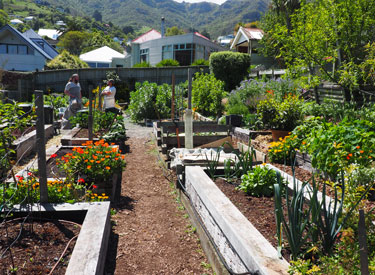
Lyttleton community garden
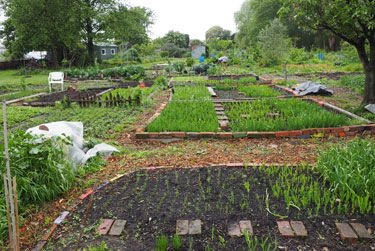
Smith Street community garden
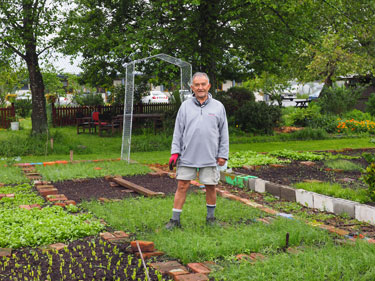
Mohammed is a regular in the Afghani community's patch
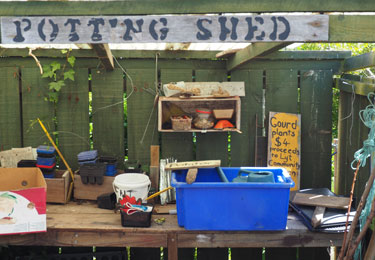
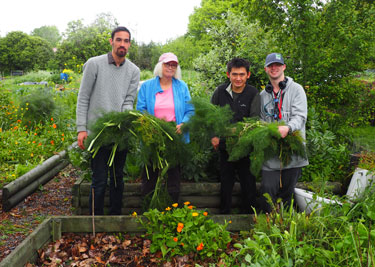
Gardeners from AJ Day Options Trust
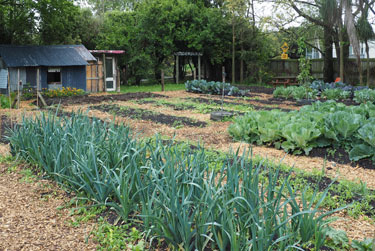
Smith Street community garden
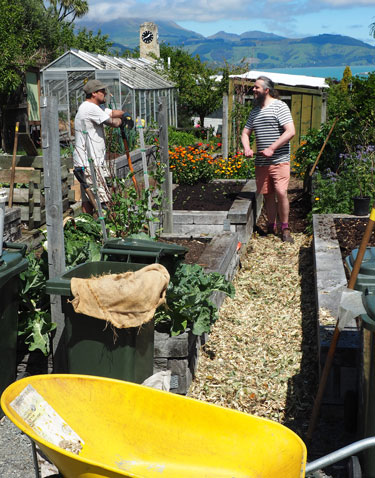
Catching up over the vege beds in Lyttleton community garden
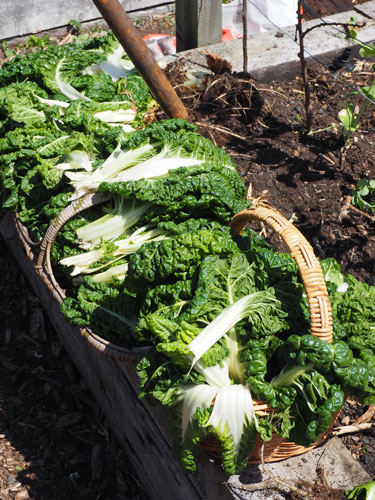
A bountiful harvest of silverbeet

